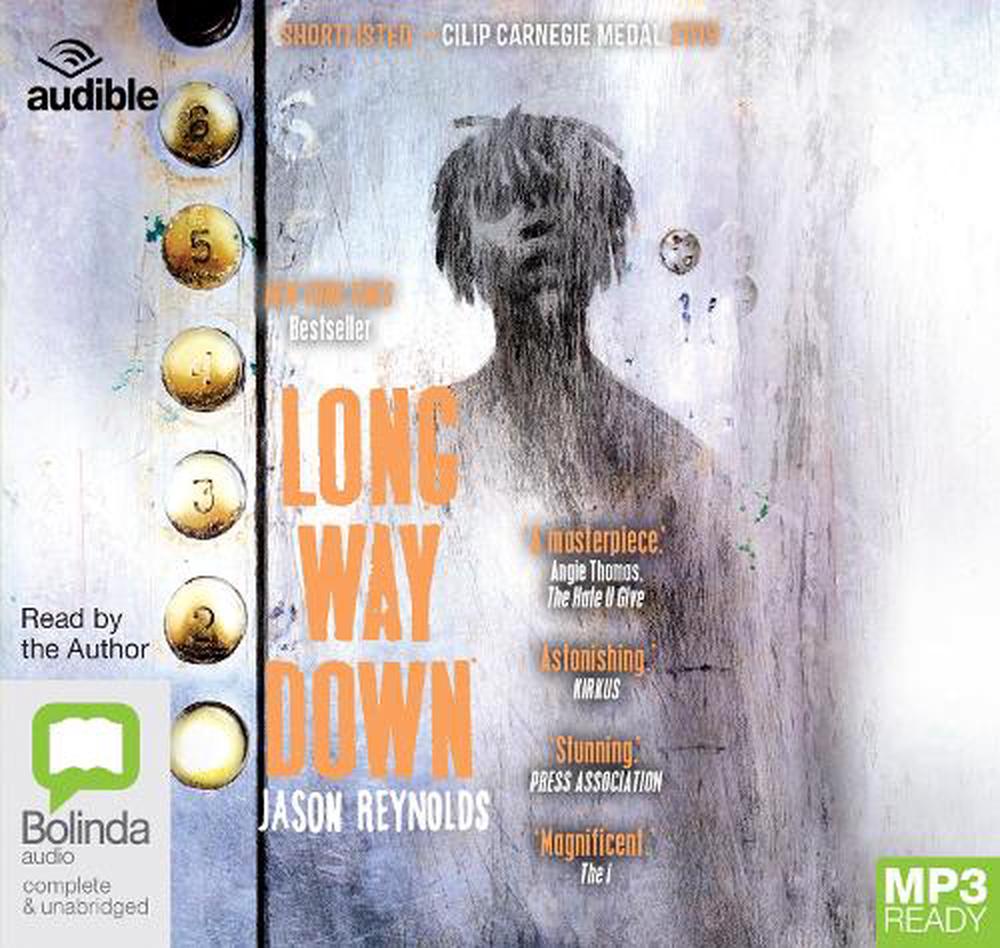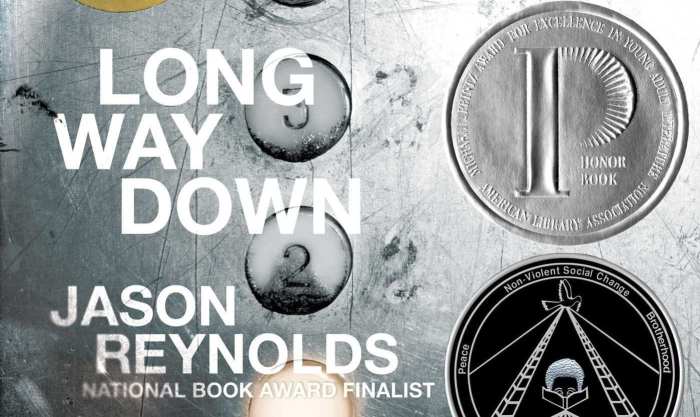Long Way Down Jason Reynolds Quotes delves into the poignant and profound novel by Jason Reynolds, exploring its themes, characters, narrative structure, literary devices, and social commentary. This literary analysis provides a comprehensive understanding of the novel’s significance and impact.
Reynolds’ unique storytelling technique, use of verse, and exploration of complex themes make Long Way Down a captivating and thought-provoking work. The novel’s examination of choice, violence, community, grief, and social issues resonates deeply with readers, offering valuable insights into the human experience.
Themes in “Long Way Down”: Long Way Down Jason Reynolds Quotes
Jason Reynolds’ “Long Way Down” explores a myriad of profound themes, delving into the complexities of urban life, violence, and the power of choice. The novel follows the journey of Will, a 15-year-old boy grappling with the aftermath of his brother’s murder.
Significance of Choice
Choice plays a pivotal role in the narrative, shaping Will’s path and ultimately his destiny. As Will descends the elevator after witnessing his brother’s death, he is confronted with a series of choices that will determine his future. Each decision, from choosing to seek revenge or forgiveness, has far-reaching consequences, highlighting the profound impact of personal agency on the trajectory of one’s life.
Consequences of Violence
“Long Way Down” unflinchingly explores the devastating consequences of violence, both on individuals and the community. Through Will’s experiences, the novel lays bare the destructive cycle of retaliation and the toll it takes on the human spirit. The novel also examines the psychological and emotional trauma inflicted by violence, leaving an enduring scar on those who witness or experience it.
Role of Community, Long way down jason reynolds quotes
Community plays a multifaceted role in “Long Way Down,” serving both as a source of support and a breeding ground for violence. The novel portrays the complexities of urban communities, where close-knit relationships coexist with deep-rooted issues such as poverty and crime.
The novel highlights the importance of community in providing guidance and solace, but also acknowledges the challenges it faces in addressing systemic issues that perpetuate violence.
Character Analysis

Will, the protagonist of “Long Way Down”, is a complex and deeply flawed character. Haunted by the murder of his brother Shawn, Will is consumed by grief, anger, and a thirst for revenge. His journey through the novel is a powerful exploration of the human psyche, as he grapples with the complexities of loss, violence, and redemption.
Grief and Trauma
Will’s grief over Shawn’s death is palpable throughout the novel. He is unable to come to terms with his brother’s absence, and his anger and sorrow manifest in self-destructive behavior and a desire for vengeance. Reynolds portrays grief as a raw and consuming emotion that can lead to both violence and self-destruction.
Supporting Characters
The supporting characters in “Long Way Down” play crucial roles in shaping Will’s journey. Danny, Will’s best friend, provides support and encouragement, while Buck, a local drug dealer, represents the path of violence and retribution. The interactions between these characters highlight the different choices that Will faces in the wake of Shawn’s death.
Narrative Structure

Jason Reynolds’ Long Way Downemploys a unique storytelling technique that immerses readers in the protagonist’s immediate experience. The novel is structured as a six-minute monologue delivered by Will, a 15-year-old boy reeling from the recent shooting death of his older brother, Shawn.
Verse and Tone
The novel is written in verse, a choice that enhances the immediacy and authenticity of Will’s voice. The rhythm and cadence of the verse mirror the protagonist’s racing thoughts and emotions, creating a visceral connection between the reader and Will’s inner turmoil.
Literary Devices

In “Long Way Down,” Jason Reynolds masterfully employs literary devices to enhance the novel’s themes and character development. Metaphors, similes, and imagery serve as powerful tools in shaping the narrative, immersing readers in Will’s journey and amplifying the novel’s emotional impact.
Metaphors
Reynolds uses metaphors to draw striking comparisons, revealing the inner workings of Will’s mind and the complexities of his situation. For instance, when Will describes the elevator ride as a “free fall,” he conveys the sense of helplessness and dread that consumes him.
Similes
Similes enhance the novel’s imagery by comparing Will’s experiences to familiar objects or events. For example, Will compares the weight of his guilt to “an anvil,” effectively conveying the burden he carries throughout the narrative.
Imagery
Reynolds’ vivid imagery transports readers into Will’s world, allowing them to experience his surroundings and emotions firsthand. Through sensory details and evocative language, the novel creates a rich tapestry of sights, sounds, smells, and emotions.
Social Commentary
Jason Reynolds’ “Long Way Down” confronts a plethora of social issues, providing a poignant critique of the complexities faced by marginalized communities.
The novel’s exploration of gun violence is particularly striking. Reynolds depicts the protagonist, Will, as a victim of a senseless shooting, highlighting the devastating impact of firearms on inner-city youth. The chilling description of Will’s murder emphasizes the urgency of addressing this pervasive problem.
Poverty and Inequality
Reynolds also delves into the insidious effects of poverty on Will’s life. The novel vividly portrays the challenges faced by families living in underprivileged neighborhoods, where access to basic necessities is often limited. Will’s struggle to find a decent home and provide for his family exposes the systemic inequalities that perpetuate poverty.
Race and Identity
Furthermore, “Long Way Down” examines the complexities of race and identity. Will’s experiences as a young black man in America highlight the pervasive racism and discrimination that continue to shape society. Reynolds confronts the stereotypes and prejudices that limit opportunities for people of color.
The novel’s social commentary remains highly relevant to contemporary society. It raises awareness about pressing issues such as gun violence, poverty, and race, urging readers to confront these challenges and work towards a more just and equitable world.
FAQ Guide
What is the significance of choice in Long Way Down?
Choice is a central theme in Long Way Down, as Will grapples with the consequences of his decisions and the impact they have on his life and the lives of others.
How does the novel explore the consequences of violence?
Long Way Down unflinchingly depicts the devastating effects of violence, both physical and emotional, on individuals and communities.
What is the role of community in Long Way Down?
Community plays a crucial role in the novel, providing both support and challenges for Will as he navigates the complexities of his life.
